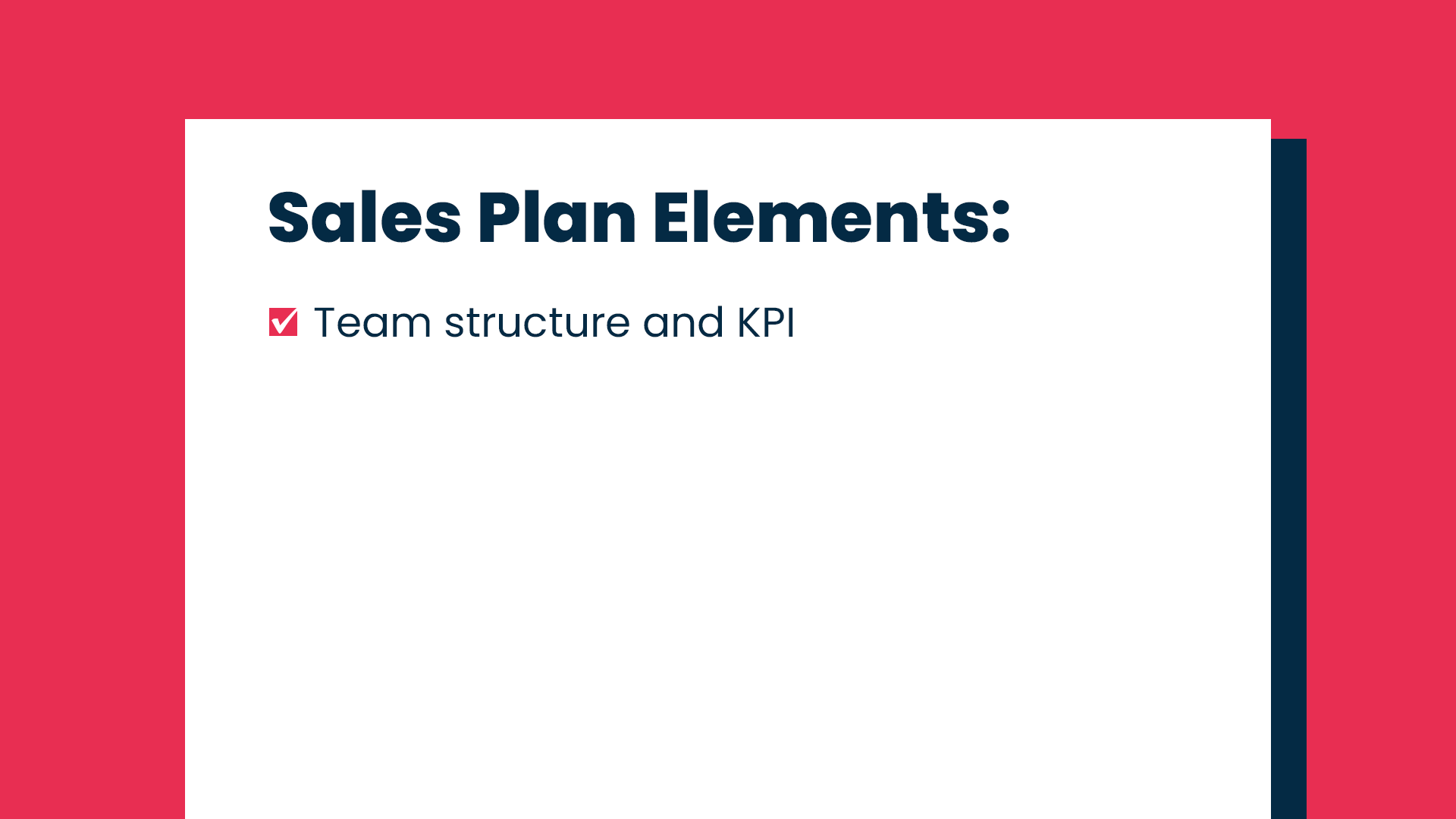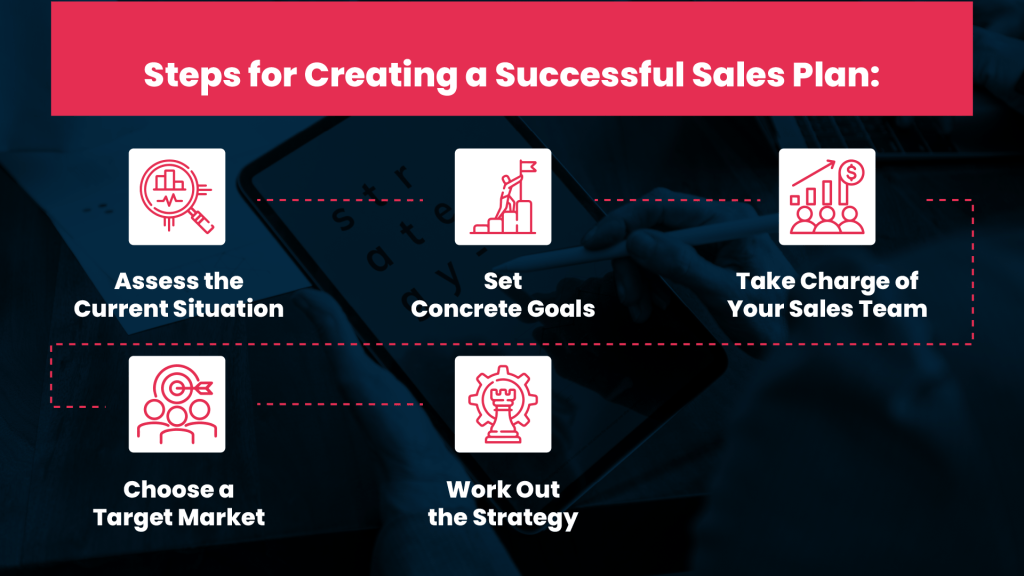A goal without a plan is just a wish, said Antoine de Saint-Exupéry. Although you might not aspire to be an author, this quote rings true for everything in life, including your business ventures. If you’re looking for a successful sales plan, look no further! But that’s not because we’re offering you one – that would be impossible. There’s no such thing as a perfect one-size-fits-all solution.
This article is devoted to helping you figure out what kind of plan is best for your startup and what steps you should take to get to the most effective one. Keep in mind that, just like with any other plan or strategy, it’s very susceptible to change. Leave room for errors and test, shape, and alter your plan as you go. We’re here to give you the tools to get you started.
What are Sales Plans and Their Key Elements?
To start with a definition, the goal of the sales plan is to define the objectives, details on how to achieve them, and the time frame. It should also have an analysis of the resources, including the exact amount that will be used as well as its allocation. Here’s a checklist of what elements need to be defined in a good sales plan:
- Team structure and KPIs
- Tactics
- Revenue goals
- Challenges and how to overcome them
- Tools
- Training programs
- Target audience
If you incorporate all these elements, you’re off to a good start. But why? The point is to help you achieve your goals and to grow your business at a greater pace. So, the benefits of strictly defining all the steps are clear: knowing what has to be done, in what way, and for what reason is an excellent motivator for everyone.

Types of Sales Plans
Before you get started with creating the plan, you should begin with deciding on the type. This should also depend on your specific business and its needs. In this article, we’ll talk about two types of plans and their subtypes. You could create one of each or try out different kinds until you figure out what fits best. Once you know what brings the best results, you should work on perfecting it.
Based on time, these are the types of plans you can build upon:
- Annual,
- Quarterly,
- Weekly,
- 30/60/90-day plans.
On the other hand, there are plans based on your goals:
- Budget plans – for determining the amount and allocation of budgets,
- Tactic plans – for detailing the ways you’ll achieve your goals,
- Revenue plans – for setting milestones for increasing revenue,
- Product-specific plans – plans for a specific product or service.
How Can You Create a Successful Sales Plan?
Now that you know where to start with tailoring your business plan, we’ll walk you through the specific steps. These can lead you to discover a custom formula that will skyrocket your business.
Step 1: Assess the Current Situation
When you’re planning for the future, step one is the present. That’s why the meeting where you want to build a sales plan should start with assessing the current situation. If this isn’t the first sales plan you’re using, evaluate the last one you had, and ask yourself:
- Was it realistic?
- Did you achieve everything you set out to achieve?
- If not, why?
- How can you achieve those goals in the upcoming period?
This is also a good time to take a breather and assess the strengths and weaknesses of your sales team to define which areas need to be improved and which need to be played into more. Leave enough time to discuss budget allocation, determining the current state, analyzing past errors, and planning for the future. Finally, check on your competitors. Find out how they’ve been doing this past quarter (or whatever other time you chose) and try to predict their next move.
Step 2: Set Concrete Goals
After looking at the past and reflecting on the present, it’s time to turn toward the future. This next phase includes setting the metrics you’ll use to measure success, defining objectives, and loosely describing the steps to achieve them. When it comes to setting KPIs in sales, you can use:
- Conversion rate/time,
- Annual/monthly recurring revenue (ARR/MRR),
- Retention rates,
- Customer lifetime value (LTV).
You should also define the time frame within which you intend to accomplish something concrete. Being precise in setting goals for yourself and your sales team will allow you to achieve them and plan later steps efficiently and effortlessly.
Step 3: Take Charge of Your Sales Team
There are a few things you need to do to ensure that you and your team are on the same page. Firstly, everyone needs to be informed about the plan and be allowed to have a say in its creation. Each member has to know exactly what their role is and what is expected of them, so take their abilities and expertise into account. They should also get acquainted with the KPIs and ways to hit those targets before you set the plan in motion.
The sales team isn’t the only one who’s capable of helping you reach your goals, so check with other departments how they can get involved. For example, it’s smart to keep sales and marketing teams closely connected since their services sometimes even overlap (e.g., lead generation).
Lastly, provide your teams with the necessary tools. It may take some time to look into various software solutions, but once you find what works best for you, you’ll quickly be able to see the results. These tools can increase efficiency and productivity, as well as alleviate some of the workload. Here are a few solutions that are most popular among sales companies:
- Customer Relationship Management (CRM) software,
- Lead generation and outreach tools,
- Communication platforms (internal and external),
- Storage systems.
Step 4: Choose a Target Market
Even if you already have a target market, now is the time to step back and reevaluate how things have been going so far. Maybe a certain niche hasn’t been responding as much as you’d expected, and another one has cropped up seemingly out of nowhere. It would be best if you looked into why that is happening and whether you want to change the strategy to cater to these changes or not.
If you haven’t selected your target yet, here’s what you should take into account:
- Age,
- Gender,
- Location,
- Income,
- Occupation.
These are, of course, not the only parameters to take into account, but they’re a good starting point. You should adjust them depending on what your product or service is, as well as depending on what you’re trying to achieve. Then, use this information to create your ideal customer profile.
The next step is to choose the way in which you’ll search for these persons or businesses. For prospecting, you can go either offline or online. Offline includes visiting events and conferences and networking, whereas online sources include LinkedIn, Google, and cold emailing, to list the most popular.
Step 5: Work Out the Strategy
The final stage of creating a successful plan is to add more details to the steps you’re going to take to achieve your goals. This is the space in which you determine the exact tactics the reps will use when reaching out to prospects, as well as lead generation procedures. It can also include some details about marketing channels, but this is optional and can be left to the marketing team (which is why solid cross-team communication is essential).
Once you have all these five steps covered, the only thing left to do is set everything in motion and closely monitor results. For start-ups, it might be better to create short-term plans so that any necessary changes can be implemented as soon as possible.

Conclusion
Since quality plans are the backbone of a successful strategy and are certain to bring results, there’s no reason to put creating one off anymore. In this article, you found the definition and types of sales plans, as well as the five steps to ensure your business plan is on the right path. Still, the key factor for success is customizability: follow results, edit the plan, and keep testing and trying until you get it just right!
NextPilots is a young and innovative sales agency that can help you make this process faster! We offer a wide array of services, so head on over to our website to read all about them, and then book a free consultation with us!

